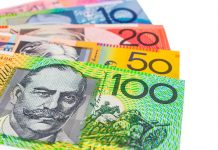Markets
It all boiled down to October US inflation figures today. Headline inflation was flat compared to September (vs +0.1% M/M forecast) resulting in a slightly bigger than anticipated drop from 3.7% Y/Y to 3.2% Y/Y. Energy prices were down 2.5% M/M with gasoline dropping 5% compared with September. Core inflation rose by 0.2% M/M (vs 0.3% M/M) with the Y/Y-figure a tad softer at 4% (from 4.1%), matching the lowest levels since August and September of 2021. The Bureau of Labour Statistics indicated that the shelter index was the largest factor in the monthly increase in core inflation (0.3% M/M). The market reaction was heavy despite the minor miss with investors taking the possibility of a December rate (14% by yesterday’s close) completely off the table and pulling forward the timing of a first Fed rate cut one meeting (from May to March). Daily changes on the US yield curve range between -15 bps (30-yr) and -22 bps (5-yr) at the moment. From a technical point of view, the 2-yr yield is back below the psychologic 5% mark with the November low at 4.80% serving as first support (4.84% live). The US 5-yr yield loses 4.50% with the November low at 4.43% (4.44% live). The US 10-yr yield is effectively losing the November low at 4.47% (4.45% live) with the 30-yr yield testing that barrier (4.61%). German Bunds rally in sympathy with yields 7 to 9 bps lower on the day and the belly of the curve outperforming the wings. The German 10-yr yield is closing in on the November low as well (2.62% vs 2.61%). Loss of interest rate support hurt the dollar. The trade-weighted greenback currently tests the November low at 104.85 from an open at 105.65. EUR/USD pierces through that technical reference, exchanging hands above 1.08 for the first time since early September (1.0820 from 1.07). Today’s figures and USD weakness even give some reprieve to USD/JPY with the pair declining from 151.80 to 150.80. European stock markets extend their recent bullish, gaining up to 1.5% for the German Dax. The EuroStoxx 50 breaks with the ruling sell-on-upticks pattern after easily taking out the previous high at 4237. US stock markets open with significant gains of up to 2% for the Nasdaq.
News & Views
Hungary and Poland reported a first estimate of Q3 GDP growth. Activity in Hungary rebounded 0.9% compared to the April-June quarter. Growth in the second quarter was also upwardly revised from -0.3% to 0.0%. The Hungarian economy posted negative quarterly growth figures since the third of last year. Even after the Q3 growth economic Hungarian activity was still 0.4% lower compared the same quarter last year. Over the first three quarters of the year, activity was 1.2% lower compared to 2022. The Hungarian Statistical office gave no exact data on the composition of the GDP, but indicated that the decrease in economic performance compared to last year was mostly owing to falls in industry and market services, with the latter mainly in wholesale and retail trade as well as scientific, technical and administrative activities. A good performance of agriculture eased the decline. The decrease in services added value was partly offset by a significant growth in section human health and social work activities. A second estimate of Q3 GDP will be published on December 01. According to flash estimate published by Statistics Poland, Q3 GDP rose 1.5% Q/Q and was 0.4% higher compared to the same quarter last year. The Statistical office also signaled a substantial upward revision of Q2 growth (0.3% from -2.2%). A first revision will be published on November 30.
Sentiment among US small business as measured by the NFIB confidence index remains sluggish. The headline indicator of the National Federation of Independ business declined from 90.8 to 90.7, touching the lowest level in five months. Firms turned more negative on recent sales and a growing number of firms reported an earnings decline over the previous three months. US smaller companies remained negative on the expected development of the economy (-43%) and see negative future earnings (-32%). The number of companies expecting better sales ‘improved’ from -13% to -10%, but still shows a bigger part of the companies seeing a deterioration. The NFIB uncertainty index declined slightly from 79 to 76. With respect to inflation, companies see higher selling prices, extending the uptrend since July (30% from 29% and 25% in July). In this respect NFIB assessed that ‘Labor costs, energy costs, and everything else small business owners pay for to operate their business are not falling, so firms continue to raise selling prices to keep up’.












